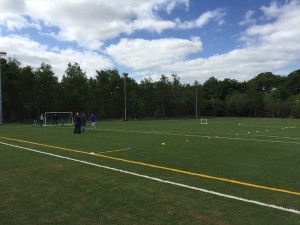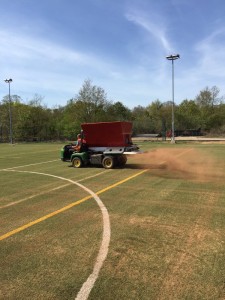Hampton Rangers Junior FC becomes the first youth club to get a cork infill 3G pitch
Hampton Rangers Junior Football Club based in SW London, courtesy of Kestrel Contractors their main sponsor, have become the first youth football club in UK to have a CORK infill 3G pitch installed at their training ground

Kestrel tested the surface at the Swedish School, via LaboSport, to EN 15330-1 and it passed with flying colours.
'The key driver as to which infill to use at Hampton Rangers was based on one major factor' said Martin, 'player comfort.'
'Player comfort was the only consideration and being mindful of the fact the facility would be used in summer and that cork remains cool regardless of air temperatures, this was instrumental in the decision making process to choose cork infill'.
The benefits of cork are;
- Restitution results show greater player comfort , ie less energy lost through the body
- Does not radiate heat
- Cork does not give off fumes
- Can be recycled and accepted in landfills at end of life cycle
- Environmentally friendly
- Sustainable
- Does not contain heavy metals

'Hampton Rangers JFC being a training facility which would be used throughout the year, I was conscious that heat on 3G pitches can be an issue', said Martin. 'We had been keeping a close eye on the performance at Swedish School to ensure that it did indeed perform as expected. The school are more than pleased, to say the least'.
'Cork is more expensive than other infills but we wanted to look at the bigger picture, ie player comfort. We were lucky that strata of the soil was gravel which meant we didn't have to build the base up with tarmac, stone or drainage. These savings allowed us to install the cork.'
The club now hopes to go from strength to strength and has further plans to continue to improve its facilities. The original 3G cage Kestrel installed 12 years ago was the catalyst for the club to grow and improve its facilities for the benefit of the wider community. The new cork infill pitch will continue to do the same and plans are already underway for new changing rooms, toilets and disabled playing surfaces.
